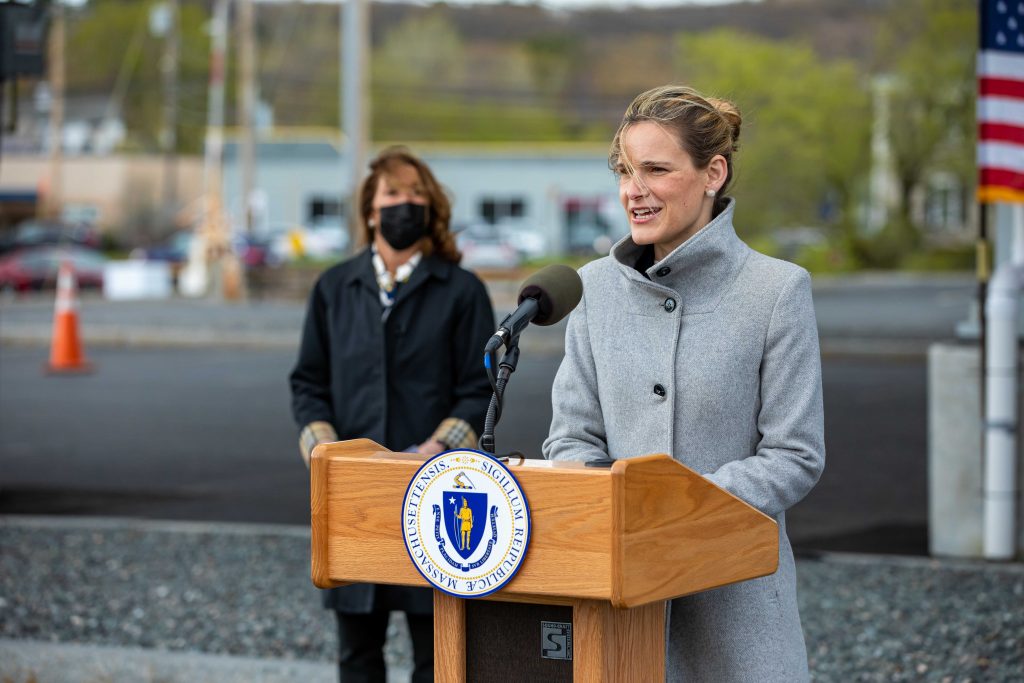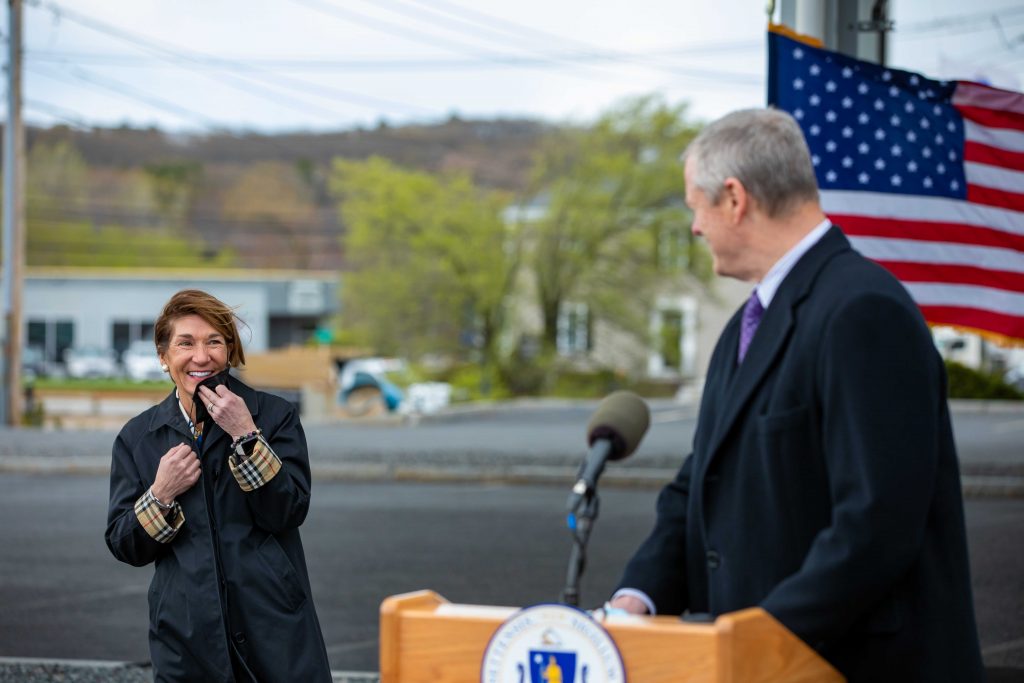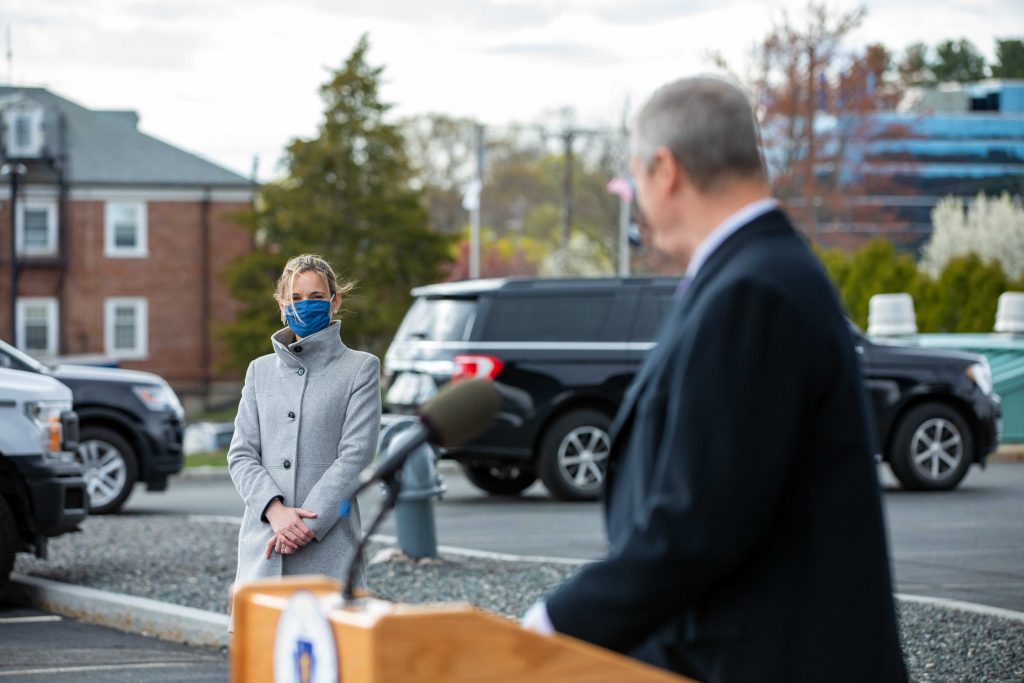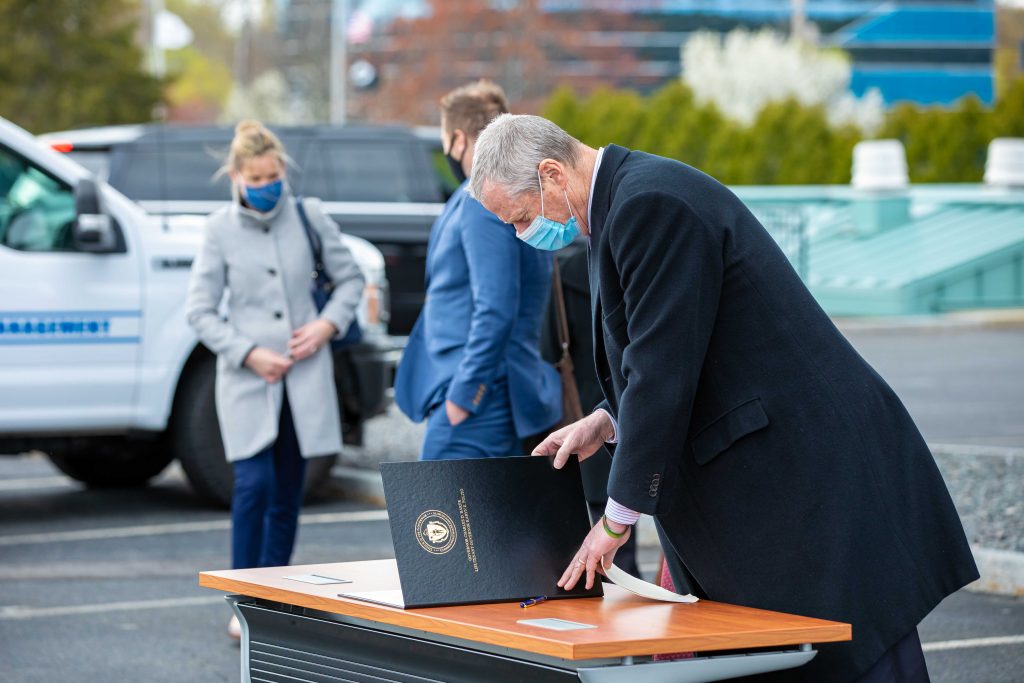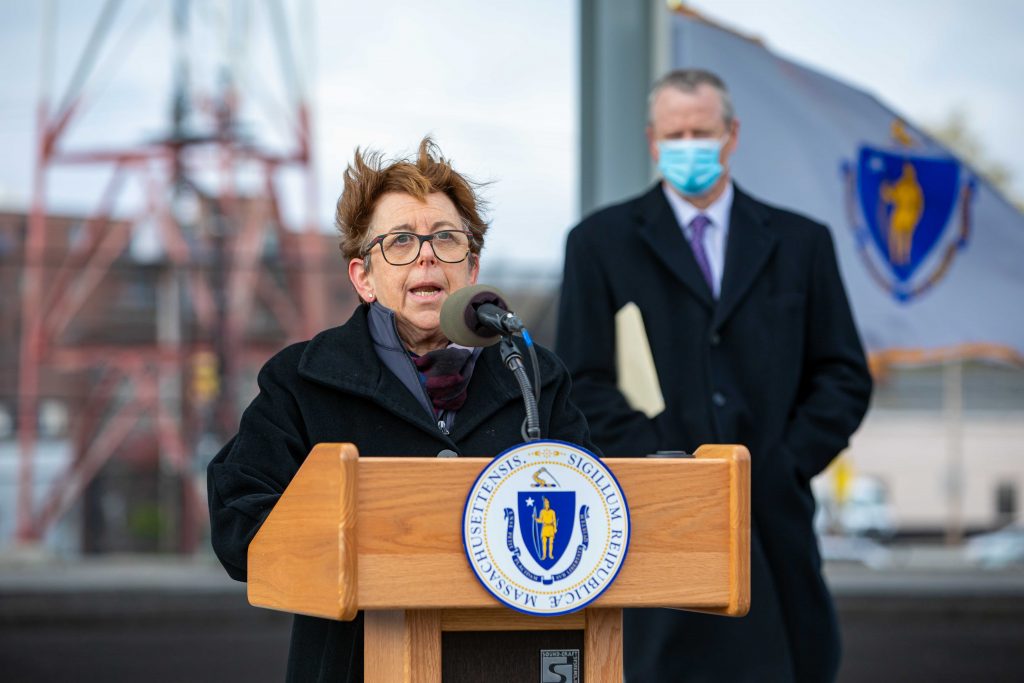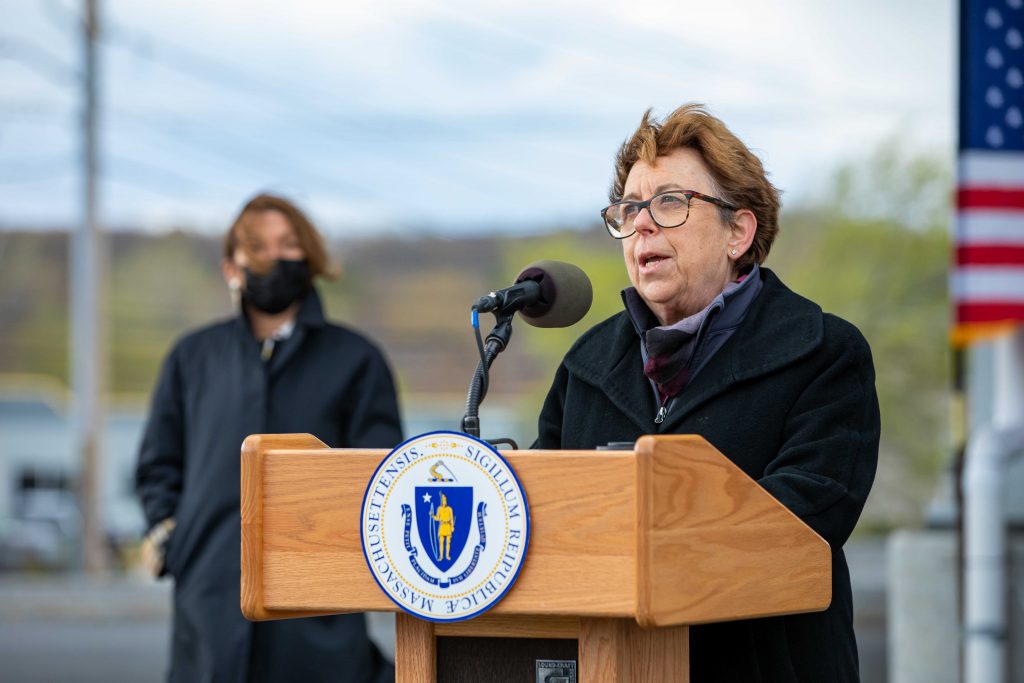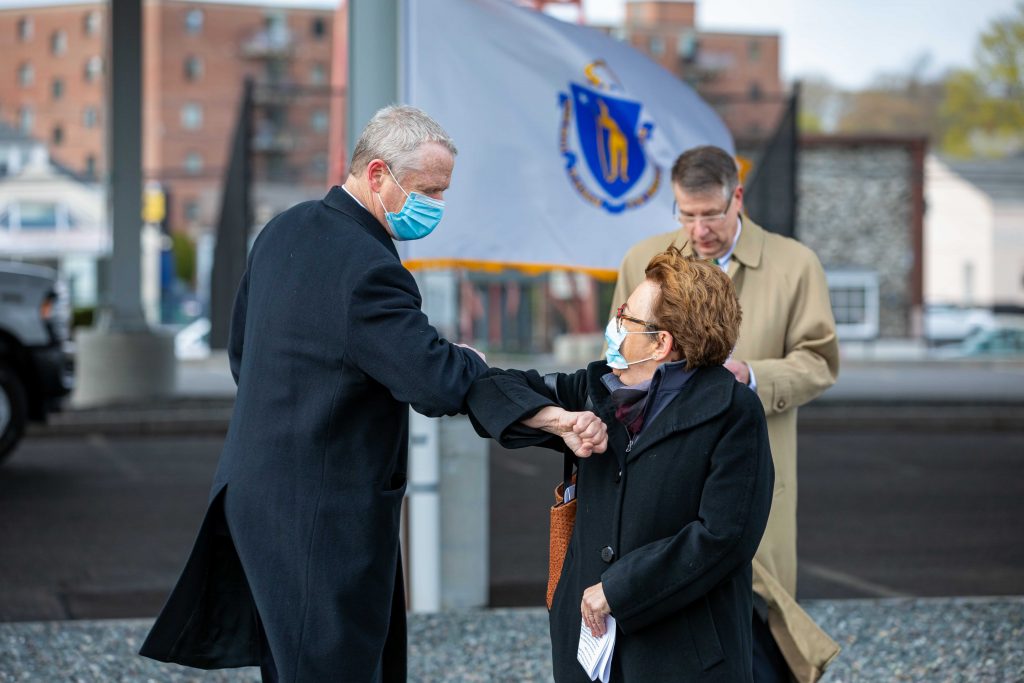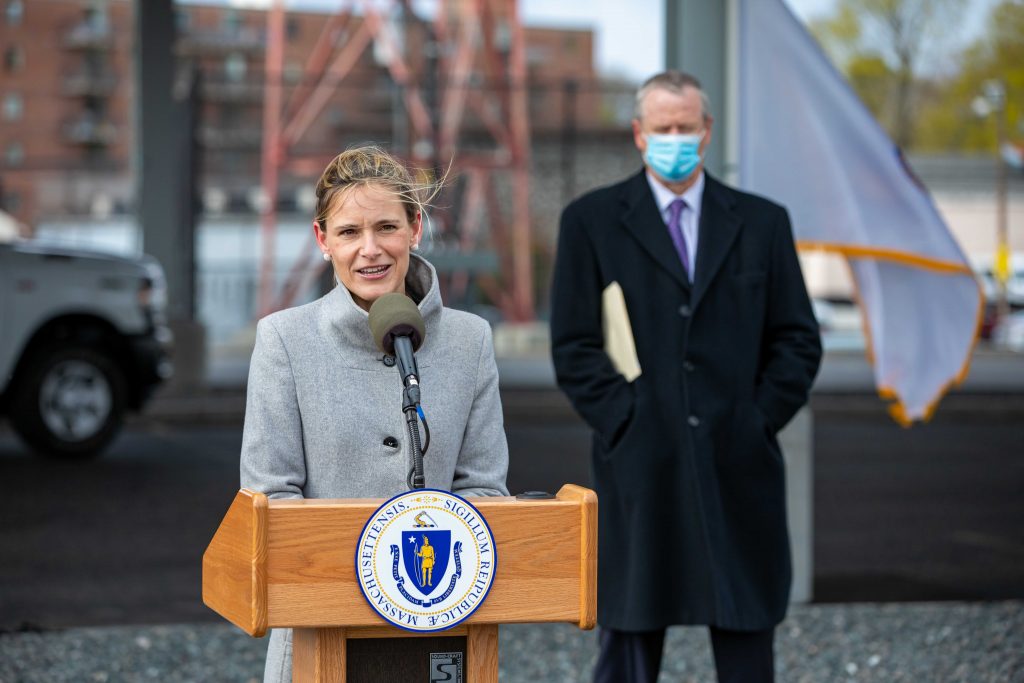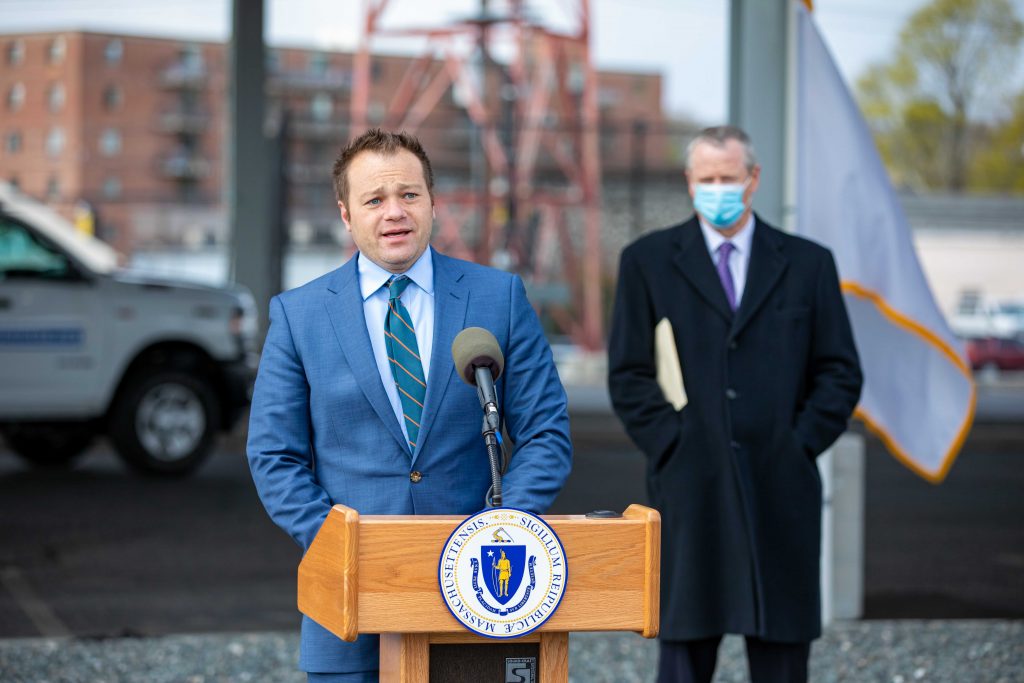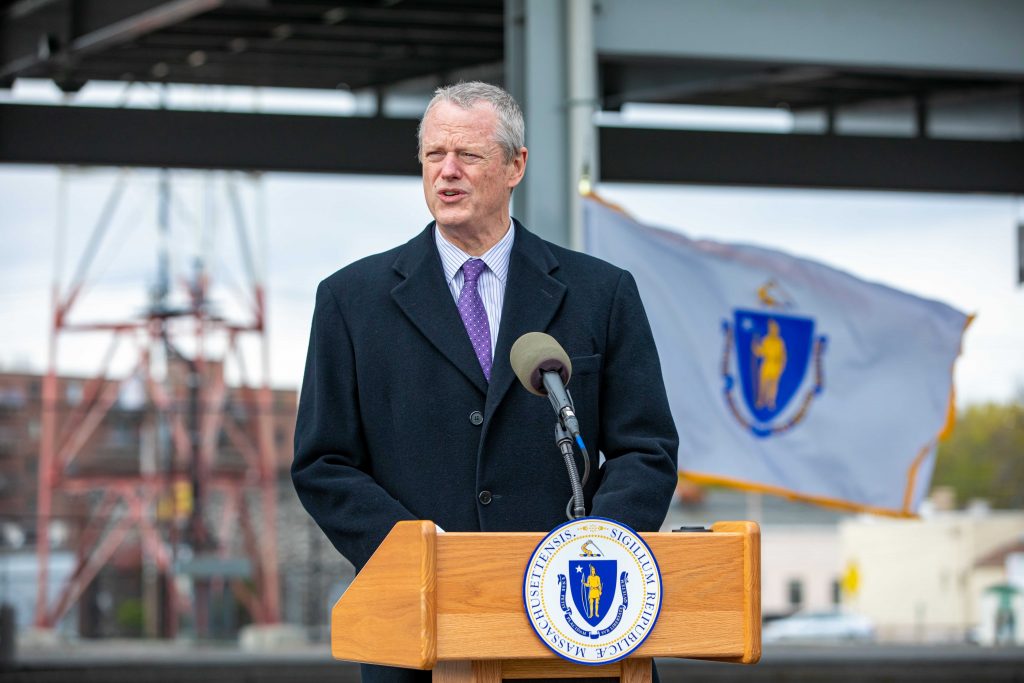
FRAMINGHAM – As part of the Baker-Polito Administration’s celebration of Earth Week in Massachusetts, Governor Charlie Baker on Thursday, April 22, joined state and local officials at the Massachusetts Emergency Management Agency (MEMA) bunker in Framingham to sign a new Executive Order building on the Administration’s efforts to reduce greenhouse gas emissions across state facilities.
The Order, Leading by Example: Decarbonizing and Minimizing Environmental Impacts of State Government, sets goals and requirements to accelerate the state’s decarbonization efforts in state agencies and public institutions of higher education, prioritizing electrification of buildings and transportation. The Order builds on the Commonwealth’s national leadership on climate change, including an announcement by Governor Baker that the Administration has met its commitment to invest $1 billion in climate spending by 2022, surpassing that benchmark in April 2021.
“Addressing climate change requires bold, urgent action, which is why I am proud that our Administration has achieved an ambitious goal of investing $1 billion in climate adaptation and mitigation efforts, an accomplishment we will continue to build on through this Executive Order,” said Governor Charlie Baker. “The Leading by Example Executive Order will boost the state’s adoption of innovative clean energy strategies, and I’m grateful for the efforts of our state agencies and institutions to help us take on the challenge of climate change.”
[broadstreet zone=”53130″]
“The Leading by Example Program empowers state government entities to continue leading and innovating on clean energy and energy efficiency,” said Lieutenant Governor Karyn Polito. “This Executive Order will support these continued efforts, reduce emissions, and lead to cost savings for many of our public universities and buildings.”
The Executive Order reinforces Massachusetts as a leader in emissions reduction efforts through a variety of strategies. To reduce emissions and increase energy resilience, the Order underscores the need for significant energy efficiency measures across the state portfolio, as well as the deployment of renewable energy and energy storage at multiple facilities. Additionally, the Order:
- Requires all new construction at state agencies and campuses to meet stringent energy performance standards, install high efficiency heating and cooling systems, and meet DOER’s new Specialized Stretch Energy Code when it is promulgated.
- Requires all state fleets to buy zero emission vehicles starting next year.
- Requires the doubling of electric vehicle charging stations installed at state facilities by 2030.
- Establishes specific and measurable emission reduction targets associated with building and vehicle fossil fuels consumed by state entities.
- Requires agencies to incorporate emissions reduction strategies into all budgetary and planning efforts.
- And requires state agencies to appoint Leading by Example coordinators in support of the Executive Order’s goals.
[broadstreet zone=”59946″]
Governor Baker was joined by Lieutenant Governor Karyn Polito, Energy and Environmental Affairs Secretary Kathleen Theoharides, Department of Energy Resources (DOER) Commissioner Patrick Woodcock, and Division of Capital Asset Management and Maintenance (DCAMM) Commissioner Carol Gladstone. The MEMA bunker features a comprehensive energy efficiency and renewable energy project completed in 2020, overseen by DCAMM and partially funded by DOER’s Leading by Example Program.
“Thanks to the commitment of our public servants and state agencies, the Commonwealth continues to lead by example on clean energy and climate action, helping us to achieve our ambitious emissions reduction goals,” said Energy and Environmental Affairs Secretary Kathleen Theoharides. “The executive order signed by Governor Baker will make our state government more sustainable, resilient, and lead to environmental benefits in cities and towns throughout Massachusetts.”
“DOER is proud to support our state partners as they make meaningful transitions in heating their buildings, powering their vehicles, and other innovative clean energy strategies,” said Department of Energy Resources Commissioner Patrick Woodcock. “Electrification of our buildings and transportation will be at the forefront of strategies to meet the executive order’s emissions targets and meet our greenhouse gas mitigation requirements.”
[broadstreet zone=”58610″]
Through the Leading by Example Program, state entities have collectively reduced greenhouse gas (GHG) emissions by 35% from a 2004 baseline, reduced heating oil use by 85%, eliminating more than 18 million gallons of fuel oil, and reduced energy use per square foot by 14%. Since 2015, state entities have installed 184 electric vehicle charging stations, deployed more than 20 MW of solar, created 42 new pollinator-friendly habitats, and completed 57 LEED Certified buildings, 35 of which achieved a Gold or Platinum rating.
“DCAMM is committed to supporting clean energy and climate initiatives throughout state government and this executive order helps the Commonwealth move toward achieving its long-term resiliency and sustainability goals,” said DCAMM Commissioner Carol Gladstone. “We look forward to continuing to work with our partner agencies to meet these emissions targets and address the impacts of climate change in communities across Massachusetts.”
“We are grateful for the opportunity to partner with DOER and DCAMM on this project to bring the solar canopy, new generators, and improvements in heating, ventilation, lighting, and other systems to the Massachusetts Emergency Management Agency (MEMA),” said MEMA Director Samantha Phillips. “MEMA’s headquarters, home to the State Emergency Operations Center, is a critical infrastructure facility and these improvements will enhance operational capabilities, reduce energy and water usage, and save money.”
[broadstreet zone=”59983″]
The MEMA bunker is the site of a comprehensive energy efficiency and renewable energy project, which includes a state-owned 275 kW parking lot solar canopy. The project will generate 376,000 kWh of renewable electricity annually and result in an estimated $100,000 in annual benefits to the site from electricity cost savings, Solar Massachusetts Renewable Target (SMART) Program incentive payments, and demand charge savings. Over 20 years, the project is estimated to provide the site with roughly $2 million in total cost savings and generated revenue. The project received a $453,750 DOER Leading By Example grant, which reduced the construction cost by approximately 27%, reducing the project’s payback period by four years.
During this year’s Earth Week in Massachusetts, the Baker-Polito Administration is highlighting its commitment to supporting the Commonwealth’s Environmental Justice communities, and ensuring that all residents are protected from environmental pollution and can enjoy a clean and healthy environment. During Earth Week, the Administration is holding events throughout the Commonwealth spotlighting important initiatives, including the expansion of tree planting through the Greening the Gateway Cities Program, increasing access to healthy, nutritious food by supporting urban farms, and ensuring clean water by providing grant funding to local municipalities.
[broadstreet zone=”59947″]
On March 26, 2021, Governor Baker signed comprehensive climate change legislation that includes nation-leading provisions related to Environmental Justice. Recognizing the significant impact of climate change on Environmental Justice communities overburdened by poor air quality and disproportionately high levels of pollution, the legislation statutorily defines Environmental Justice and environmental burdens, including climate change as an environmental burden. The legislation also expands Massachusetts Environmental Policy Act (MEPA) review to require an Environmental Impact Report for all projects that impact air quality within one mile of an Environmental Justice Neighborhood, and requires the Department of Environmental Protection to conduct a stakeholder process to develop a cumulative impact analysis as a condition of permitting certain projects. This change would, for the first time, require the agency to evaluate not just individual project impacts but also historic environmental pollution throughout the community through the permit process.
In December of 2020, the Baker-Polito Administration released two reports – the Massachusetts 2050 Decarbonization Roadmap Report and an interim 2030 Clean Energy and Climate Plan (CECP) – that detailed policies and strategies to reduce emissions and combat climate change, including an interim 2030 statewide emissions limit of 45% below 1990 levels. The roadmap outlined the need to enhance energy efficiency measures and decarbonize existing buildings, which would include most municipal and town buildings like schools, police departments, and water facilities.
***

Photos and press release courtesy of the Governor’s Office. Photos by Joshua Qualls/Governor’s Press Office
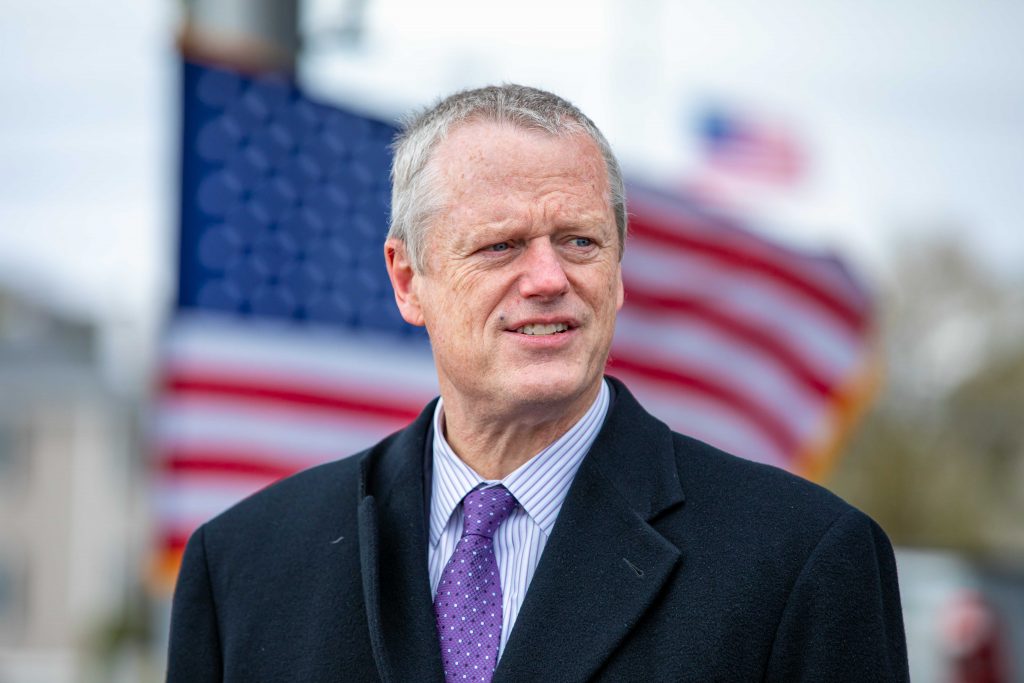

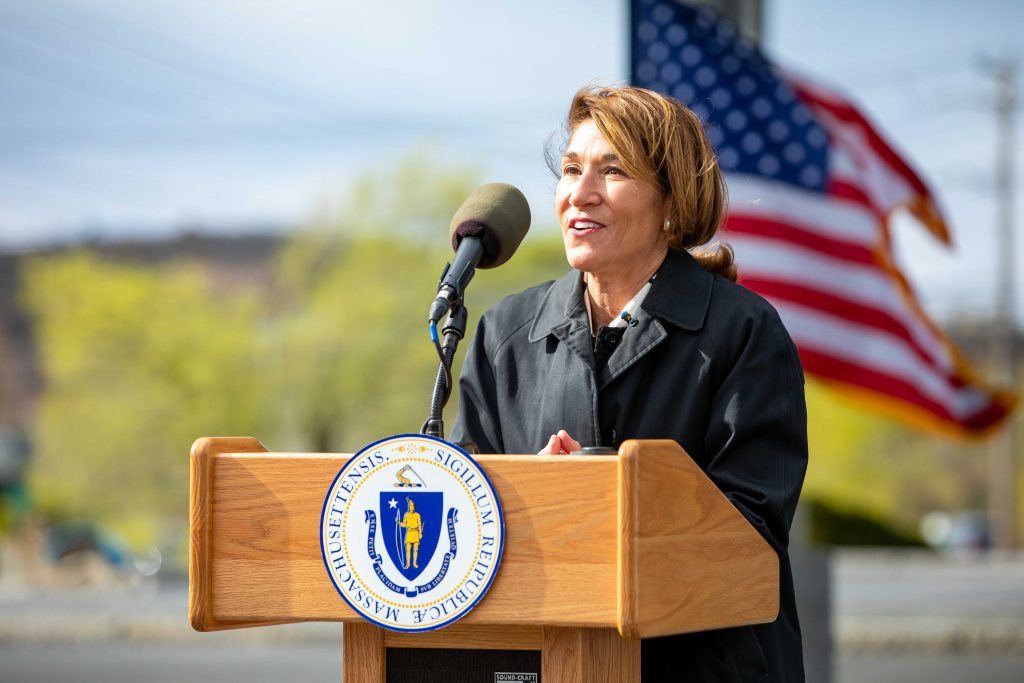

[Joshua Qualls/Governor’s Press Office] 
